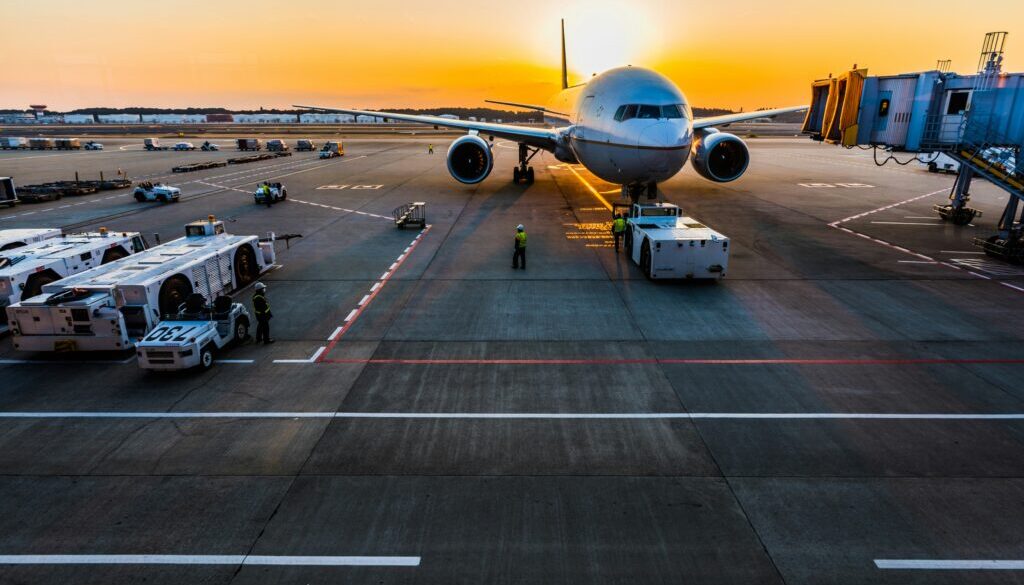Deadline looms for California airports to stop using PFAS firefighting foams
By Benjamin Purper
A majority of California airports known to be contaminated with toxic PFAS chemicals are continuing to rely on PFAS-laden foams for firefighting, despite a looming state deadline to phase out the foams due to the risks they pose to human and environmental health.
Only four out of 30 contaminated airports in the state have confirmed that they have stopped using foams containing per- and polyfluoroalkyl substances (PFAS) – also known as “forever chemicals” – and moved to a PFAS-free alternative. The majority are still struggling to transition, The New Lede has learned.
Though there is some indecision by state officials over the deadline for compliance, the airports could potentially face civil action against continued use of the PFAS-containing foams after September.
On Thursday, state Senator Ben Allen sent a letter to the California’s Office of the State Fire Marshal (OSFM) stating that the airports should halt all use of the foams by Sept. 13 at the latest to be in compliance with state law.
“We can no longer delay our transition away from these dangerous forever chemicals,” Allen told The New Lede. “I look forward to working closely with the State Fire Marshal over the next month to ensure a smooth transition to a cleaner future.”
The OSFM has indicated, however, that an additional grace period may be allowed. The agency said in an emailed statement that it will provide airports with “expected” final compliance dates after it receives updated information from the Federal Aviation Administration (FAA) about new foam alternatives.
Exposure to PFAS has been linked to numerous health issues, including cancer, liver damage, developmental damage to infants, and other health problems. The federal government has said that “tackling PFAS” pollution is a “top priority.”
“Firefighting foam contains a lot of [PFAS],” said Anna Reade, director of PFAS advocacy at the Natural Resources Defense Council (NRDC). “There should be a real urgent need to phase them out as quickly as possible.”
Aqueous film-forming foam (AFFF) has been used for decades as a fire suppressant not just at airports, but on military bases and in municipal firefighting operations around the world. The PFAS chemicals contained in AFFF have been shown to be extremely hazardous, causing an array of health problems in people exposed to the chemicals.
Widespread contamination of water sources, including those used for drinking water, has been blamed on the use of AFFF. The issue has led to state and federal action to curb further PFAS contamination and clean up myriad sites where soil and water have been contaminated by the chemicals. Numerous lawsuits have been filed over contamination issues, including alleged contamination of drinking water supplies by use of AFFF at airports.
In 2019, the California Department of Water Resources issued orders to 30 airports across the state to investigate whether AFFF use had contaminated their soil and/or groundwater with PFAS.
There are hundreds of airports of varying size in California, but only certain airports, called “Part 139” airports, have been required by the FAA to use AFFF.
Investigations at all 30 of the Part 139 airports revealed some level of PFAS contamination. At San Luis Obispo County Regional Airport (SBP), high levels of PFAS were found to have leaked into nearby domestic wells, and some residents reported illnesses including liver damage and prostate cancer after drinking from those wells for decades.
The concerns surround the San Luis Obispo airport led US Rep. Salud Carbajal to author a bill specifically aimed at helping airports eliminate PFAS from their firefighting systems.
The New Lede contacted all 30 of the impacted airports. Of the 26 that responded, The New Lede found only four reported halting all uses of AFFF and transitioning to a PFAS-free alternative call fluorine-free foam (F3). The four are Los Angeles International (LAX), Chico Municipal (CIC), Del Norte County Regional (CEC) and Mammoth-Yosemite (MMH).
The rest of the airports that responded reported that transitions were either underway or had not yet started. The four that did not respond are Ontario International (ONT), Imperial County (IPL), Southern California Logistics (VCV), and San Bernardino International (SBD).
Many of the airports that have not fully transitioned cited struggles in securing sufficient quantities of F3 and complexities in recalibrating equipment to accommodate the new suppressant. An additional challenge is the safe disposal of existing supplies of AFFF, the reported.
In an emailed statement, the FAA confirmed the supply chain issue, saying the US Department of Defense has qualified two F3 manufacturers and one is working through a backlog. As for the funding issue, the FAA said there is help on the way in the form of the 2024 FAA Reauthorization Act, which “authorizes approximately $350 million in grant funds to reimburse airports for costs associated with transitioning to PFAS-free firefighting foam and equipment.”
The issue is not unique to California. Airports around the country are grappling with how to address PFAS contamination from firefighting foam, and several states besides California have passed measures to combat PFAS contamination at airports. The state of Washington is requiring all 11 of its Part 139 airports to transition to PFAS-free alternatives by September of next year, while a major cleanup operation is underway at Seattle-Tacoma International Airport.
(Photo by Rocker Sta on Unsplash.)
 EWG
EWG


